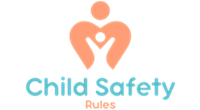As a parent, one of your top priorities is ensuring the safety and well-being of your children. Protecting your little ones from harm can sometimes feel overwhelming, but with the right knowledge and strategies in place, you can create a safe and secure environment for your family. Here are some expert tips for parenting safety to help you keep your children safe.
1. Childproof your home
One of the first steps in keeping your children safe is to childproof your home. This includes installing safety gates, securing furniture to the wall to prevent tip-overs, covering electrical outlets, and keeping hazardous chemicals out of reach. Take a walk around your home and identify any potential hazards that could pose a danger to your children, and take steps to address them.
2. Teach your children about safety
Empower your children with the knowledge and skills they need to stay safe. Talk to them about stranger danger, how to navigate safely online, and what to do in case of an emergency. Practice safety drills with your children, such as fire drills and emergency evacuation plans, so that they are prepared in case of a crisis.
3. Supervise your children
One of the most important aspects of parenting safety is supervision. Keep a close eye on your children, especially in situations where they could be at risk, such as by the pool or near busy roads. Make sure to set boundaries and enforce rules to help keep your children safe.
4. Encourage open communication
Create an environment where your children feel comfortable talking to you about their concerns and fears. Encourage open communication and listen to your children without judgment. Let them know that they can always come to you if they feel scared or uncomfortable.
5. Set a good example
Children learn by example, so be a role model for safe behavior. Wear your seatbelt in the car, wear a helmet when biking, and follow safety rules when crossing the street. Your children will learn from your actions and be more likely to model safe behavior themselves.
6. Stay informed
Stay up-to-date on the latest safety guidelines and recommendations for parents. Follow reputable sources such as the American Academy of Pediatrics and the Centers for Disease Control and Prevention for the most current information on child safety. Stay informed about recalls on children’s products and make sure your children’s car seats, cribs, and other essentials meet current safety standards.
By following these expert tips for parenting safety, you can help protect your children and create a secure environment for your family. Remember that safety is an ongoing process, and it’s important to adapt and adjust your strategies as your children grow and develop. By prioritizing safety and taking proactive steps to protect your children, you can give them the best start in life and peace of mind as a parent.










